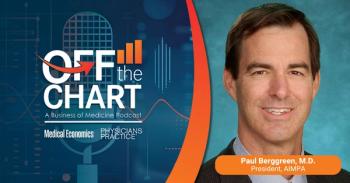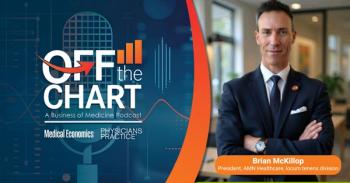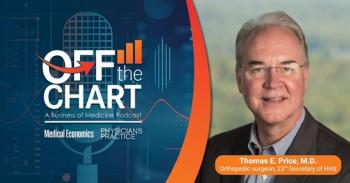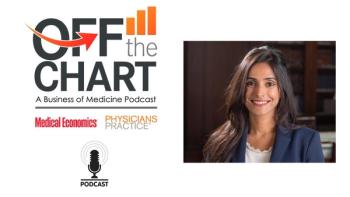
Investing in Patient Education - The Benefits for Your Patients and Your Practice
Over the last several decades, patient care has evolved from a physician-centric model to a more patient-centered strategy. This modern approach seeks to empower the patient to prevent and manage chronic conditions, while recognizing the importance of behavior modification and the critical influence of friends and family on patient self-care.
At the same time, technology has had a dramatic impact on the way patients learn about and think about their health. The Internet has vastly increased the availability and accessibility of consumer health information, and the explosion of alternative news outlets has elevated medical news to the mainstream.
Both the patient-centered care model and advances in technology are game-changers in how patients obtain and use healthcare information. In the past, passing out a brochure or handout or having a discussion about a patient's condition might have been considered sufficient education. But, just as the patient's responsibility has evolved, today's primary-care and specialty physicians must ensure that their patient education protocols have kept pace. Indeed, sophisticated tools and resources are available to help patients make informed decisions and increase compliance. For practices, providing easy-to-use education materials can save time, help promote the practice, and build relationships with patients.
Meeting Modern Challenges
In today's healthcare environment, patients are expected to be more engaged in self-care and self-management. Care plans for long-term chronic conditions like diabetes mellitus, hypercholesterolemia, obesity, and hypertension, as well as the move toward shorter hospital stays and more ambulatory surgery, require a higher level of patient commitment and participation than in the past.
In all of these situations, positive outcomes depend largely on patients' understanding of their conditions and their self-care plans, as explained by their physician and other healthcare professionals. "We have them for minutes in our sphere, then we have to rely on what they've learned and what we've taught them," says Michael Villaire, MSLM, director of programs and operations for the Institute for Healthcare Advancement, a health literacy nonprofit based in La Habra, Calif.
In cases when the physician doesn't fill that need, patients may seek information from other sources. In March 2009, 74.4 percent of Americans reported using the Internet regularly, and 79 percent of all adult American Internet users acknowledged searching for health information, according to a study published in the journal Patient Education and Counseling.1 The Internet can be a powerful tool for patient education, but without guidance, patients can easily become confused, overwhelmed, and misinformed. "Type one term into Google, and it's information overload," says Villaire.
However, despite the ubiquity of the Internet, studies show that physicians are still the preferred source of information for the majority of patients. In a meta-analysis of patient health information seeking behavior research, published in the May/June 2010 issue of Orthopaedic Nursing, researchers found that "the health care professional was cited as the most common and trusted source of information."
Research also shows that patient education initiatives are worth the effort. Studies have demonstrated that effective patient education increases patient satisfaction, improves compliance and outcomes, and reduces patient anxiety. In addition, The Joint Commission and other national healthcare policy organizations have recognized the impact of patient education on patient safety. Educated patients are more likely to recognize an error or a side effect before it is too late, and to speak up to clinical staff about their concerns.
At The Urological Centers of Colorado (TUCC), a Denver, Colo., multi-physician specialty practice, clinical staff has gotten direct feedback on the effectiveness of their pre-op education from the staff of the local ambulatory surgery center. "[The surgery center staff] could always tell when it was one of our patients, because they knew what to expect, and their pain and anxiety levels were lower," says Martha Ruschival, RN, BSN, TUCC's nurse educator and community liaison.
Comprehensive patient education may also pay operational dividends for the practice. Experts say that an intentional, comprehensive approach to patient education can actually save physicians time while also producing better results. For example, when Krames, a patient education content provider, surveyed its primary-care and specialty physician clients, physicians said that using the company's materials helped them save more than 10 minutes per patient on average. "[The materials] help physicians make the most of the limited time they have with patients," says Bob Abrahamson, vice president of marketing for Krames. "They can use the content as a reference to step them through the important points, and send [the patient] home with reference material." The survey also showed that patients who received the content were less likely to call back or schedule follow-up visits to address questions or concerns. At TUCC, Ruschival has seen those results firsthand: She reports that since implementing their patient education protocols, patient phone calls have decreased, both during and after hours.
Improvements in patient satisfaction, compliance, and outcomes may be particularly valuable in today's pay-for-performance environment. In 2009, the Consumer Assessment of Healthcare Providers and Systems (CAHPS®) survey, a tool developed by the Agency for Healthcare Research and Quality to enable health plans, employers, and consumers assess quality of care, added a measure to evaluate patient education and health literacy programs.
Quality = Adaptable + Appropriate
The most successful programs incorporate patient education into every aspect of patient care, and use a variety of delivery strategies to support those goals. Patient education researchers encourage "an active collaborative transaction between the sender and the receiver," rather than a once-and-done approach, explain Gary L. Kreps and Linda Neuhauser in Patient Education and Counseling. Ideally, a patient education program offers a combination of Web- Offering a variety of tools and techniques allows physicians to customize patient education based on an individual patient's learning and coping style. based and hard-copy materials and videos, plus one-on-one conversations with clinical staff and group sessions.
Offering a variety of tools and techniques allows physicians to customize patient education based on an individual patient's learning and coping style. "[Patient education] is a dynamic equation, a fluid process," says Villaire. "You can't just nail it down and say if you do A, B, and C, you're golden. It doesn't work that way." Simply asking the patient if he or she prefers auditory, visual, or tactile learning and adapting the approach accordingly can improve comprehension. Similarly, adapting the volume, amount of detail, and pace of information delivery to the patient's preferences can foster trust and reduce anxiety.2
At TUCC, clinical staff has put this theory into practice. "Some patients will delve into packs of information, stacks of books, and Google incessantly; others just want us to tell them what to do. You have to gauge [the education approach] as we go through the process to [determine] what they really want," says Ruschival. TUCC offers a wide variety of patient education materials, including books, handouts, videos, and DVDs, and a variety of specialized support groups.
Selecting and developing those materials requires an understanding and acknowledgment of patients' health literacy levels. According to Villaire, research shows that half of the population can't read much above the eighth grade level. The expansion of Medicare and Medicaid coverage to those currently uninsured under the recent healthcare reform law is likely to increase the volume of patients with low health literacy seeking care.
But health literacy is not just about education level or socioeconomic status; even highly educated people can have difficulty understanding medical information, particularly if they are anxious about their condition.
For this reason, it is important to include family members in the education process when appropriate. This is another example of customizing the approach to fit the patient's needs. "Sometimes it's the spouse or the adult children or a close friend who will take on the burden of educating themselves about the disease so the patient can cope with the diagnosis and how it impacts their lives," says Ruschival.
Whether the audience is the patient or a family member, written materials should not exceed an eighth grade reading level, an assessment based on word selection and sentence length. But experts say that reading level is just one of many other factors that should be considered when designing patient education materials.
"There are [dozens] of decisions we need to make when we're putting these things together," says Villaire. Font size and style, spacing, paragraph length, logical grouping of information, and the amount of white space are all factors that influence reading comprehension. In addition, the physical design of printed materials can have an impact. The tri-fold brochure may be difficult for some readers to navigate, and the materials should be easily accessible and usable by patients, caregivers, and providers alike as a teaching aid.
Patient education should also be informed by principles of adult learning. Adults absorb information best when they understand how the information will benefit them, when the approach respects their autonomy, and when data is presented in relation to real-life situations that they can relate to. Adults are also best motivated by specifics, such as a desire to see grandchildren grow up or continued enjoyment of a hobby, than abstract ideas of better health.
Partnership Can Help Your Practice
Obviously, developing an effective patient education program involves more than transferring a physicians' clinical knowledge onto a printed page. First, practice leadership must make it clear that patient education is a priority. "The most important thing is the physicians in the practice need to value [patient education] and the impact it has on their patients," says Ruschival. Practice protocols and policies may need to be adapted to incorporate patient education; staff may need to be presented with the literature demonstrating the clinical and operational benefits of a comprehensive approach.
A practice's commitment to patient education is also demonstrated by the quality of the materials it uses. Few practices have in-house expertise in educational resource development, or the resources to devote to it. In addition, many practices struggle to keep patient education materials in stock and up to date. Clinical practice guidelines and patient care protocols change frequently, and physicians are loath to invest time, money, and space on materials that may become obsolete before they can be used.
For these reasons, more and more primary-care and specialty practices are partnering with a professional patient education content provider. The benefits are many: professionally designed materials that reflect the latest clinical research and editorial and design best practices, while also incorporating principles of adult learning and health literacy knowledge. Content providers offer information in a variety of formats such as written materials, interactive modules, and video, and can even supply materials in a variety of languages. And by utilizing Web-based delivery, practices never have to worry about storage space or ensuring that information is up-to-date. Content providers can even provide staff support for establishing a patient education program and training staff.
Research has shown that Web-based materials can enhance the patient education experience. Patients have reported that interactive Web-based tools helped improve their "knowledge, confidence and health, and that this enhanced ‘empowerment' strengthened their relationship with health professionals."3
To address these issues, TUCC chose to partner with Krames, a leader in patient education content delivery. Today, TUCC's Web site features a Patient Education tab, with links to condition-specific information and graphics on diagnosis, signs and symptoms, treatment options, and medications, all provided by Krames. Each page can be accessed by patients or family members from any Internet-enabled computer, and offers a print format option for patients who prefer hard-copy material. Physicians can even provide an "information prescription" ID code to a patient, which allows access to a page of information customized to that patient's condition and circumstances.
Ruschival says the Krames content has simplified and streamlined TUCC's patient education efforts. The staff uses a combination of standard Krames content and materials they've worked with Krames to customize, which is available in English and in Spanish. TUCC is also working to incorporate the Krames patient education materials into its electronic medical records work flow. Now, staff members can pull up educational materials within a patient's electronic medical record, and the system automatically documents that the material was provided to the patient. The EMR also includes a template to remind the staff member of points to cover in the patient education conversation.
Krames also offers a variety of other materials to support practices' patient education initiatives, including Web-based videos and interactive education modules, as well as printed booklets, tear-sheets, and workbooks. And all Krames materials are designed with readability and health literacy in mind: developers use the Suitability Assessment of Materials model, which measures 22 factors of patient education in six categories, to ensure that materials are appropriate, understandable, and accessible.
In addition, Krames includes the practice name and logo on all materials, even on Web content, to help practices reinforce their own brands and reassure the patient that the information has been provided by his or her physician. Providing professional, high-quality materials and information customized with the practice name helps reinforce patients' confidence in their physician and the care they're receiving.
Today's patients have more health information available to them from more sources than ever before. But they still look to their physicians for information, guidance, and education. Offering professional, up-to-date and easily accessible information to patients reinforces the physician- patient relationship and fosters trust and confidence, while increasing patient satisfaction measures and reducing practice costs.
Jennifer Taylor Arnold is a freelance medical writer and editor based in Baltimore, Md.
1. "New Directions in eHealth Communication: Opportunities and Challenges" Kreps et al, Patient Education and Counseling 78 (2010) 329-336
2. "Benefits of Preoperative Education on Adult Elective Surgery Patients" Kruzik, AORN J 90 (September 2009) 381-387
3. "New Directions in eHealth Communication: Opportunities and Challenges" Kreps et al, Patient Education and Counseling 78 (2010) 329-336
KRAMES (a MediMedia Company) is the market leader in patient education and consumer health information solutions. Over 85 percent of American hospitals, as well as leading health plans, employer groups, private and group practice physicians, and pharmaceutical companies use Krames' solutions to improve quality of care, streamline workflow and lower healthcare costs. Krames also brings health literacy expertise to American Heart Association/American Stroke Association and American Lung Association patient education through exclusive partnerships with these respected organizations.
Founded in 1974, KRAMES remains at the leading edge of patient education with innovative programs that utilize a comprehensive suite of print, electronic and video content.
800-333-3032
Newsletter
Optimize your practice with the Physicians Practice newsletter, offering management pearls, leadership tips, and business strategies tailored for practice administrators and physicians of any specialty.














